Science Night 2025 – Echoes from the Spill: Science that Shaped a Region
On the evening of Thursday, December 4, 2025, we explored the past, present, and future of science in the Exxon Valdez oil spill region with speakers Jeff Short, Beks Rumley, and Gary Shigenaka.
Thank you to our partner organizations who hosted watch parties! Kodiak at the Seafood and Marine Science Center, Valdez at the Prince William Sound College, and Cordova at the Prince William Sound Science Center.
Presentations
The Scientific Legacy of the Exxon Valdez Oil Spill
- Speaker: Jeffrey W. Short, PhD, JWS Consulting LLC
- The Exxon Valdez was the first intensively-studied oil spill in history. Damage assessment studies discovered far more environmental damage than expected. Dr. Short will discuss the unique scientific opportunity and studies prompted by the spill followed by a brief comparison with science conducted after the Deepwater Horizon.
Coastal Resilience through Tribal Stewardship: Science, Sovereignty and Community Voice
- Speaker: Beks Rumley, Climate Change Coordinator, Chugach Regional Resources Commission
- This presentation shares how tribally led consortium Chugach Regional Resources Commission (CRRC) integrates traditional knowledge with western science to address climate change impacts across the Chugach region. We will cover CRRC’s work with ocean monitoring, subsistence species research, tribal conservation efforts, and adaptation planning. The biggest takeaway? Resilience grows when communities lead the research that affects them.
Exxon Valdez: A Look Back and Some Thoughts about the Path Ahead
- Speaker: Gary Shigenaka, Biologist (Retired!)/Emeritus Scientist, NOAA/Emergency Response Division
- The Exxon Valdez led to important scientific and institutional changes that continue to shape the spill response community today. This talk will explore the early science after the spill and the creation of the Oil Pollution Act of 1990 as a lens to examine what has happened since, present status, and an outlook for the future.
Visit our Science Night main page for details on past events.
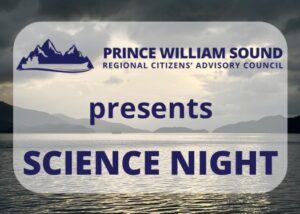
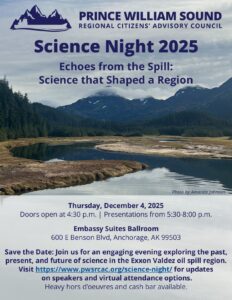
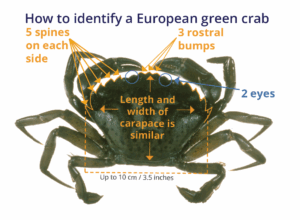
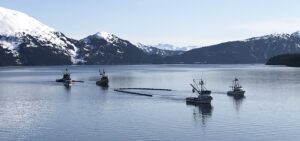
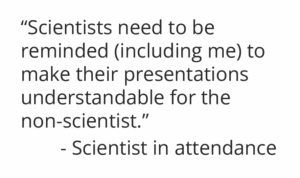 One of the Council’s goals was to learn about research needs from community members. Discussion questions were designed to encourage stories about changes in their local environment. The Council hopes to be able to develop future projects in collaboration with communities based on this feedback and knowledge sharing.
One of the Council’s goals was to learn about research needs from community members. Discussion questions were designed to encourage stories about changes in their local environment. The Council hopes to be able to develop future projects in collaboration with communities based on this feedback and knowledge sharing.